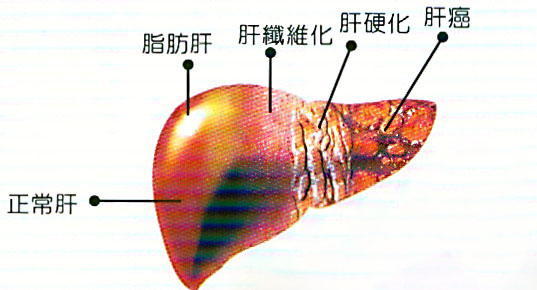
A group of research data released at the annual meeting of the European Association for the Study of the Liver (EASL) showed that non-alcoholic fatty liver disease (NAFLD) is becoming one of the major causes of liver cancer. According to statistics, the number of liver cancer patients is increasing by 5% every year from 2004 to 2009. More seriously, the survival time of fatty liver patients with cancer is shorter than liver cancer patients with a history of hepatics B and hepatitis C. Usually speaking, liver cancer are already at advanced stage when clinical symptoms are noted and patients cannot undergo liver transplantation due to complications. Medical experts noted that fatty liver patients must receive regular checkup to see if there is hepatic fibrosis. If there is any, they are advised to do liver cancer screening every 6 months to avoid liver cancer.
Fatty liver are not necessarily caused by overnutrition
According to statistics, the development of liver cancer is related with 48% of hepatitis C, 26% of fatty liver, 14% of alcoholic liver disease, 8% of hepatitis B, 4% of autoimmune hepatitis or biliary cirrhosis cases. Fatty liver related liver cancer ranks only to hepatitis C. Medical experts noted that also known as fatty liver disease (FLD) is an abnormal condition where large vacuoles of triglyceride fat accumulate in liver cells via the process of steatosis caused by a variety of reasons. Fatty liver disease includes simple fatty liver, non-alcoholic steatohepatitis and liver cirrhosis. Among them, around 10% simple fatty liver will progress into fatty liver hepatitis and 20%-40% of non-alcoholic steatohepatitis will progress into liver fibrosis and liver cirrhosis and eventually evolve into liver cancer.
Generally speaking, fatty liver are caused by mainly three reasons, including obesity, diabetic hyperlipemia and excessive drinking. However, fatty liver is also noted among thin people. Medical experts noted prolonged starvation, anorexia nervosa, malabsorption caused by intestinal lesion will lead to critical shortage of energy necessary for normal function of the body. To maintain metabolic demands
Liver biopsy is the golden standard for fatty liver diagnosis but very few people would do it
Fatty liver typically has no associated symptoms. Only severe fatty liver patients may experience symptoms like hepatitis, including loss of appetite, hepatalgia, and hepatosplenomegal. Medical experts advise that if the fatty liver patients are obese and drink excessively, they may check serum transaminase and L-glutamine transpeptidase or do a CT scan to see if they are having diffused fatty liver.
Medical experts noted that the only way for fatty liver diagnosis is liver biopsy. However, only very people would do it considering it being invasive.
There is no effective therapy for fatty liver
When it comes to fatty liver treatment, medical experts would advise fatty liver patients to adjust dietary structure, do aerobic exercises and rectify unhealthy lifestyle since there is no effective therapy for it.
Medical experts noted that if the fatty liver patients are obese, they are advised to lose weight. If the weight is reduced by 3%-5%, the fatty liver will be obviously alleviated. If the weight is reduced by 10%, the hepatic inflammation will also be alleviated. Fatty liver patients are kindly advised to reduce the intake of meat and sweet drink and increase the intake of vegetables, fruits, tea, bean products and nuts.
In terms of moderate aerobic exercise, young and old patients are advised to do less extensive sports such as walking, jogging, swimming, bicycle riding, etc; younger patients can do some extensive exercise such as dancing and gaming according to their own interests.